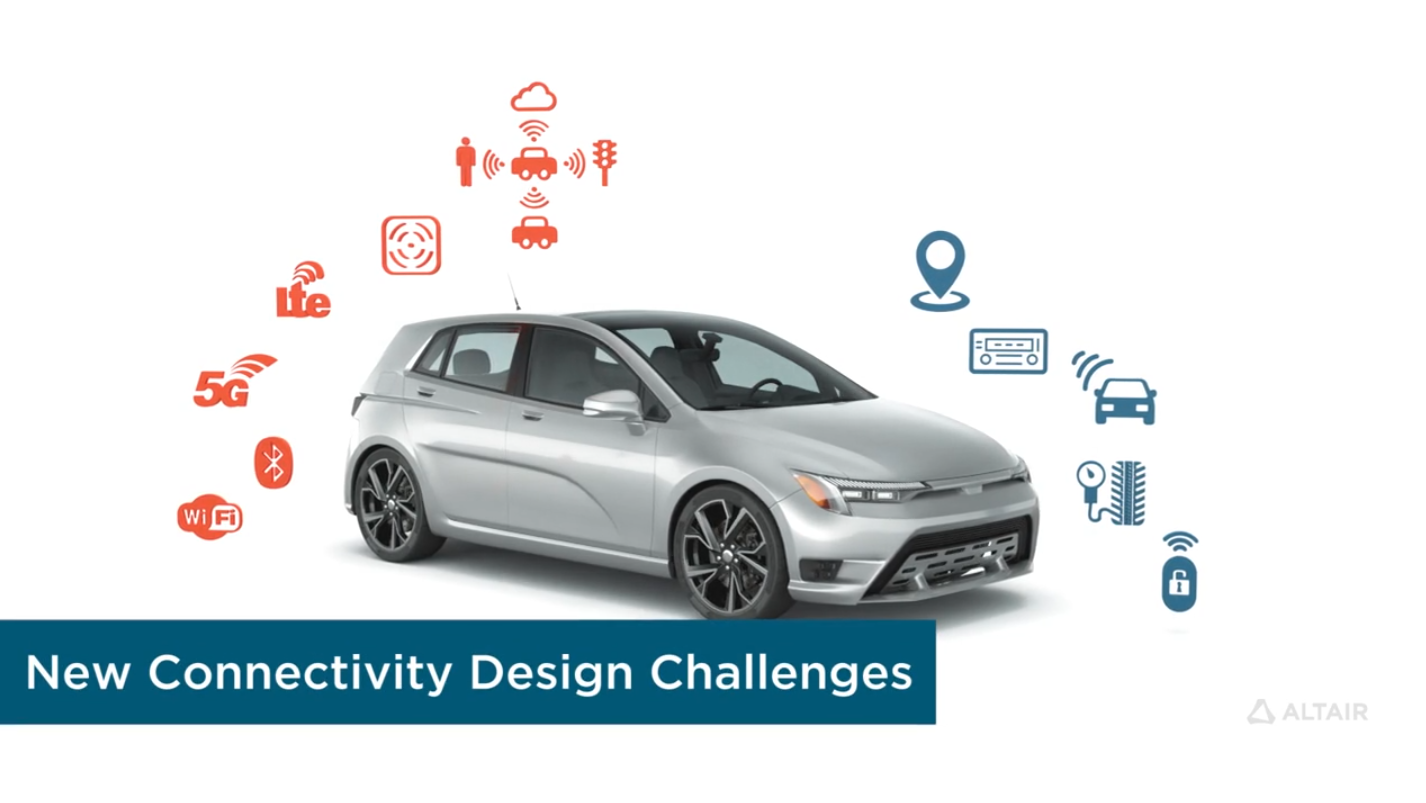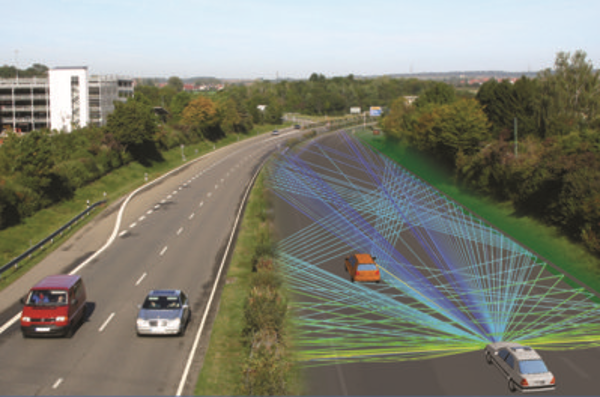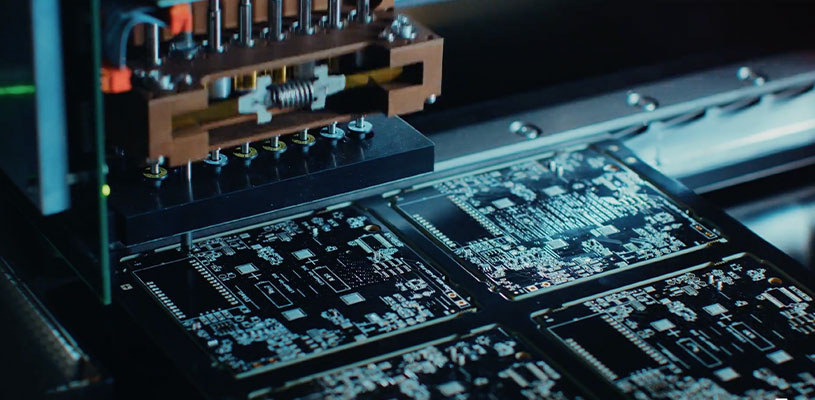
Autonomous Vehicles and ADAS
Autonomous vehicles (AV) and advanced driver assistance systems (ADAS) bring increased complexity and a need for more testing. Exploring all the required scenarios within product development timing requires advanced simulation and the application of high-performance computing (HPC). Altair technology enables customers to deliver solutions that makes cars and trucks safer today and on the road to driverless mobility.
Altair simulation is vital to vehicle-to-vehicle (V2V), vehicle-to-infrastructure (V2I), vehicle-to-everything (V2X), AV, and ADAS development at our customers. Antennas are key to creating the seamless and reliable communication needed in all three scenarios. And Altair offers solutions in a wide array of engineering for antennas, from design to placement to communication. Some of the performance criteria for antenna designs can be tested in physical antenna chambers, but despite the huge expense they do not represent a real-world environment. For this, more development teams are simulating device signal strength and data throughput in a virtual cityscape with Altair.
Radar, Ultrasonic, and LiDAR Design and Integration
Design and integration of automotive radars is challenging due to high operational frequencies and has resulted in electromagnetic (EM) simulation being used more often to reduce the long and expensive prototyping cycles of the radar systems. Due to the electrically large size of the vehicle at the radar frequencies, computational requirements can be high for the EM simulations.
Altair® Feko®efficiently and accurately simulates radar antenna design as well as the integration aspects, including radome and bumper effects. Feko also provides a solution for ultrasonic sensors, and the Altair Partner Alliance (APA) offers access to TracePro for LiDAR modeling.
Integrated Software for PCB Design
Altair® PollEx™ is the most comprehensive and integrated set of PCB design viewing, analysis and verification tools for electrical, electronics, and manufacturing engineers. PollEx transfers data flawlessly between the industry’s most popular ECAD and simulation tools and enables many of the world’s major electronics corporations to quickly visualize and review PCB designs. Its checking tools detect issues early in the design to avoid product failures and simplify manufacture and assembly.
How can we help your next vehicle innovation?
Contact Us
Run and Manage Test Scenarios at Scale
Most AV and ADAS development testing leverages existing on-premises or public cloud HPC environments. Altair® Accelerator™ is a best-in-class HPC technology used by all major electronics design organizations to rapidly scale, accelerate, and optimize resources and cost when running millions of simulations. Accelerator is the fastest high throughput scheduler and can process 10 million jobs per hour.
The Next Generation Connectivity
5G Antenna Design and Placement: Feko is widely used for the design of radio and TV, wireless, cellular, communication, remote keyless entry, tire pressure monitoring, satellite positioning, radars, RFID, and other antennas.
5G Radio Channel Models Feko wave propagation models have been extended to account for the higher frequency bands and specific characteristics of 5G. This includes the definition of the electrical properties for material transmission and reflection in addition to atmospheric absorption characteristics.
A wideband propagation measurement campaign at 73 GHz in New York City has been used to verify that the Altair ray tracing model is able to correctly predict the propagation characteristics.
5G Radio Networks: Ultra-dense networks will be required in urban areas to meet high data volumes. Feko ray-tracing can analyze large numbers of base stations simultaneously, including new designs such as massive multiple-input and multiple-output (MIMO) antenna arrays on base stations. It has also enabled the virtual testing of elevation spread of departure (ESD) angles in city environments to evaluate network performance.
Featured Resources

Antenna Optimization & Virtual Test Drive Platform
Next generation vehicles brings increased complexity and a need for more connectivity. Altair Feko™ solution for antenna optimization and Virtual Test Drive platform is the key to developing new products to support connectivity ecosystems. And Altair offers solutions in a wide array of engineering for antennas, from design to placement to communication. For this, more development teams are simulating device signal strength and data throughput in a virtual cityscape with Altair.

Virtual Drive Tests for ADAS Radar Sensors and Communication Antennas
This webinar shows how Altair WinProp considers the full environment including buildings, cars, street objects in order to get accurate representations of the radio waves impinging on the installed car antennas and the multipath radar channels including reflections, diffractions and scattered contributions. For the efficient analysis the car objects can be also replaced by their corresponding radar cross sections (pre-calculated in Altair Feko). Thus allowing the realistic and fully reproducible evaluations of different options for the antennas and sensors including their integration and configuration.

Panel Discussion: Delivering on the Promise of Future Mobility
Presented as part of Altair's 2021 Future.Industry Conference.






